Urad dal (black mung beans) is noted for its high alkalinity, and yellow dal is the next most alkaline according to Ayurveda cooking. Urad dal is especially useful in mitigating elevated cholesterol levels. The process requires some preparation time and results in a gluten-free pancake that serves as a healthy substitute.
Dal and Dosa with Pineapple Chutney is an uncommon combination, as dosa is typically served with dal or coconut chutney.
Dal and Dosa with Pineapple Chutney
Nutritional Benefits of Urad Dal Urad dal is an excellent source of energy, providing a balanced combination of complex carbohydrates, protein, and healthy fats. Its high iron content helps boost energy levels by improving oxygen circulation throughout the body. This, in turn, contributes to radiant skin and healthy hair, as increased oxygen flow promotes a natural glow. Beyond internal benefits, urad dal is also known for its skincare properties. It can be used to treat sunburn, tanning, and acne, making it a valuable ingredient for skin health. Additionally, the essential fatty acids found in black lentils help strengthen hair and prevent brittleness over time. From an Ayurvedic perspective, urad dal (also known as black mung beans) is considered the most alkaline of all beans. This makes it especially beneficial for heart health, as it helps regulate cholesterol levels and supports overall cardiovascular well-being.
Ingredients
- For Dosa:
- 7 ounce /200g urad dal (skinned black mung bean)
- 1 cup rice
- 1/2 cup black beans
- 1/4 cup raw sesame oil or extra virgin coconut oil
- 1/2 teaspoon baking powder
- 1 teaspoon black pepper
- 2 cups water
- 1 teaspoon salt
- For Yellow Dal:
- 1 small bunch of spinach leaves, washed and chopped
- 1 cup yellow dal (yellow mung dal skinned)
- 1/2 teaspoon coriander powder
- 1/2 teaspoon turmeric powder
- 1/2 teaspoon coriander seeds
- 1/2 teaspoon cumin powder
- 1/2 teaspoon cumin seeds
- 1 tablespoon curry leaves
- 1 teaspoon salt to taste
- 1 1/4 cups water
- 1/2 teaspoon ginger paste
- 1/2 teaspoon chili powder
- 1 tablespoon black mustard seeds
- 1/2 crushed fenugreek seeds
- 2 tablespoons raw sesame or coconut oil
- 1/2 cup juice from tamarind paste
- 1 tablespoon ghee (for non-vegans) optional
- 1 small dried red chili or fresh green chili, chopped
- 1/2 teaspoon asafoetida (optional as it has wheat flour)
- For Pineapple Chutney:
- 4 cloves
- 1 star anise
- 1 tablespoon raisins
- 1 cinnamon stick
- 1/2 teaspoon chili powder
- 1/2 teaspoon ginger paste
- 1 tablespoon dark brown sugar
- 1/2 teaspoon turmeric powder
- 1 teaspoon black mustard seeds
- 2 pods of cardamom, crushed
- 2 tablespoons raw sesame or coconut oil
- 8.8 ounce / 250 grams pineapples, cubed
Instructions
Step 1: Preparing the Dosa Batter
In two separate bowls, soak the urad dal and rice for 4–6 hours.
Blend the rice and black beans separately until smooth, then mix them well in a bowl. Cover and let the mixture sit overnight at room temperature to allow slight fermentation.
If you prefer to make the dosa immediately, add ½ teaspoon of baking powder, mix well, and let it rest for 15 minutes before cooking.
Step 2: Cooking the Dosa
Once ready to cook, add 1 teaspoon of salt and ½ cup of raw sesame oil or extra virgin coconut oil to the batter, mixing well.
Heat a non-stick skillet or saucepan over medium heat. Pour ¼ to ⅓ cup of the batter onto the skillet and use the underside of a ladle to spread it in a circular motion.
When small bubbles form and break, the dosa has slightly fermented, producing probiotics that aid digestion.
Wait for the edges to turn slightly brown—this indicates the bottom is lightly crispy and ready to flip. This usually takes 2–3 minutes. For a crispier dosa, let it cook for another 1–2 minutes before flipping.
Step 3: Making the Pineapple Chutney
In a saucepan over medium heat, add vegetable oil and black mustard seeds. Once the seeds begin to crackle, add all the other spices. Stir for a few seconds before adding the raisins and pineapple cubes.
Sauté briefly, then add dark brown sugar and let it simmer until the pineapple becomes soft and succulent and the sauce slightly thickens. Turn off the heat and set it aside.
Step 4: Preparing the Yellow Dal
In a pot, cook the yellow dal in 1¼ cups of water for about 20 minutes, or until nearly cooked.
Add tamarind juice and continue cooking for another 5–10 minutes, ensuring the dal is soft yet firm enough to hold its shape when molded.
In a separate pan, heat sesame oil over medium heat and sauté black mustard seeds until they crackle. Add coriander, cumin seeds, crushed fenugreek seeds, curry leaves, cumin powder, and coriander powder. After a minute, add asafoetida, turmeric powder, and dried red chili or green chili (optional).
Pour this spiced mixture into the cooked dal and stir well to achieve a thick consistency. Add spinach leaves, season with salt, and cook until the spinach releases some liquid. Set aside.
Step 5: Plating the Dish
To serve, place the dosa in the center of the plate or roll it up on the side.
Using a cooking mold, add the yellow dal mixture inside, pressing it down to hold the shape. Carefully remove the mold and serve with pineapple chutney on the side, accompanied by a fresh salad.
Enjoy your delicious, wholesome meal!
Nutrition
-
328.0 Calories
-
33.6g Carbohydrates
-
5.0mg Cholesterol
-
18.4g Fat
-
11.1g Fiber
-
9.8g Protein
-
6g Saturated fat
-
740.0mg Sodium
-
9.9g Sugar
-
0.0g Trans fat

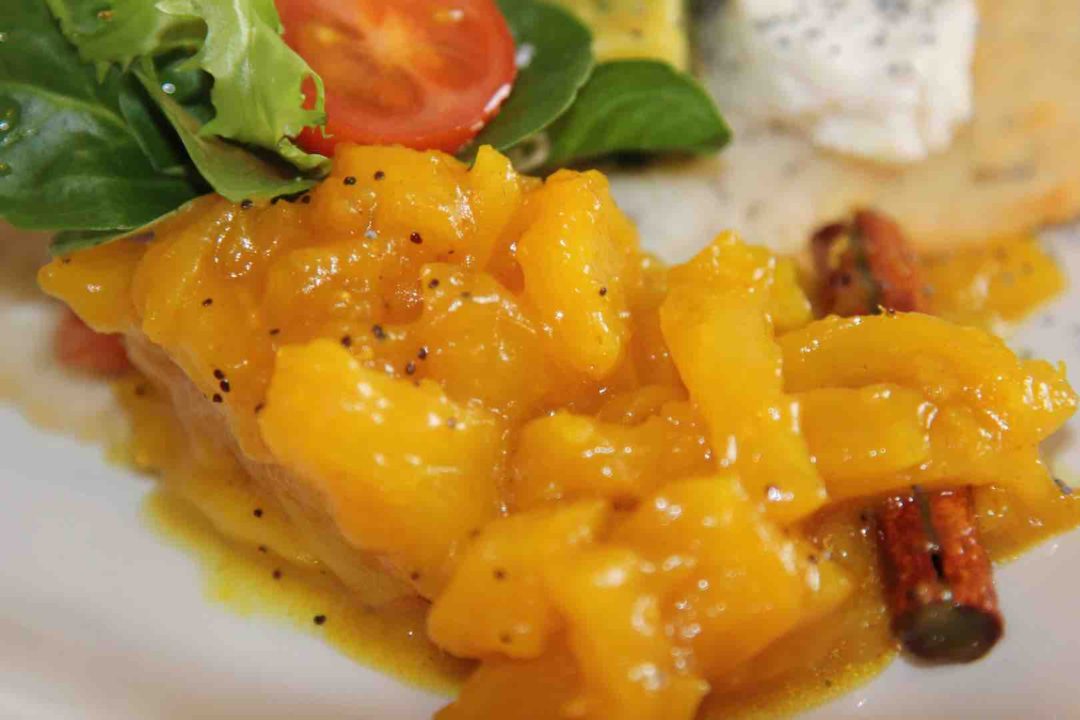

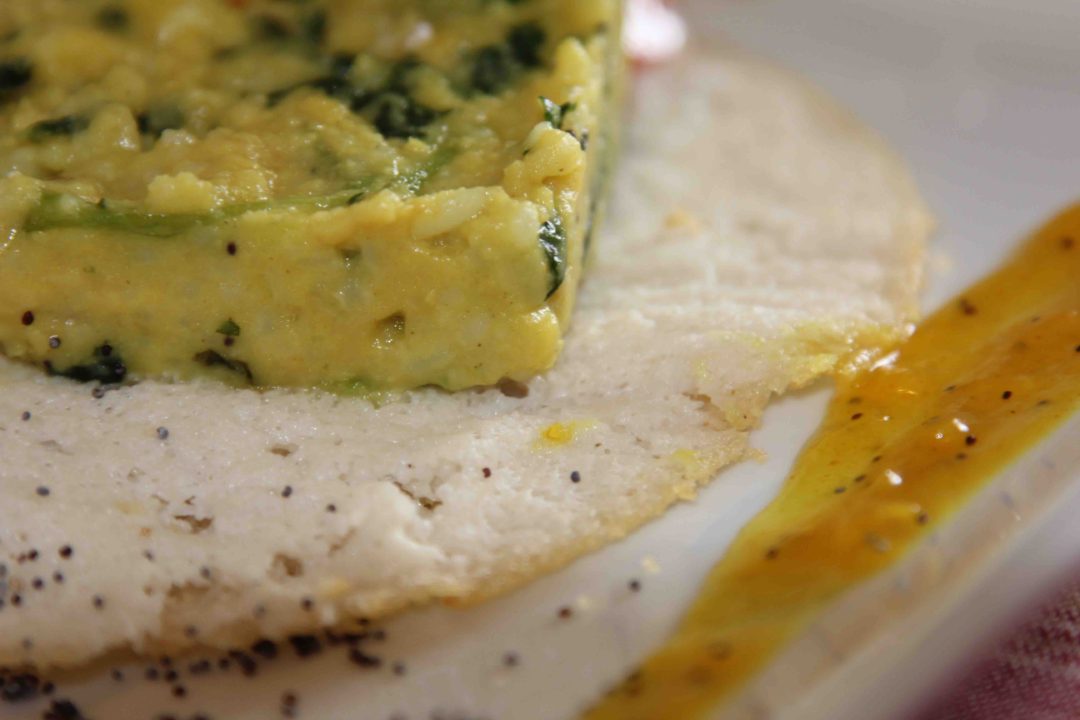
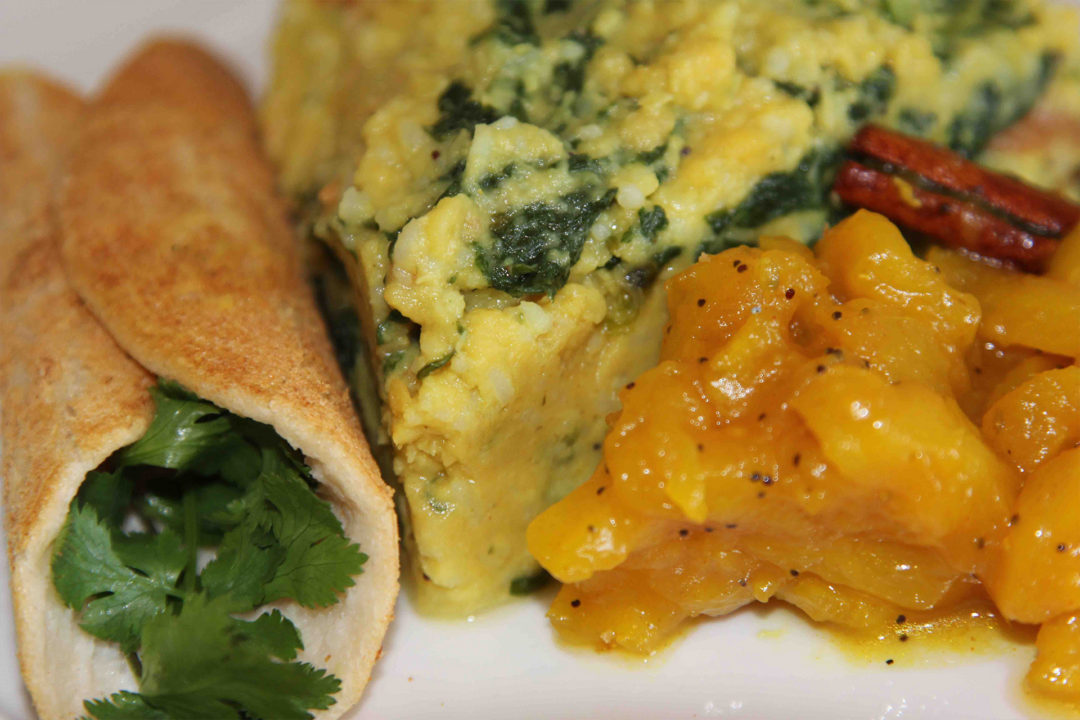
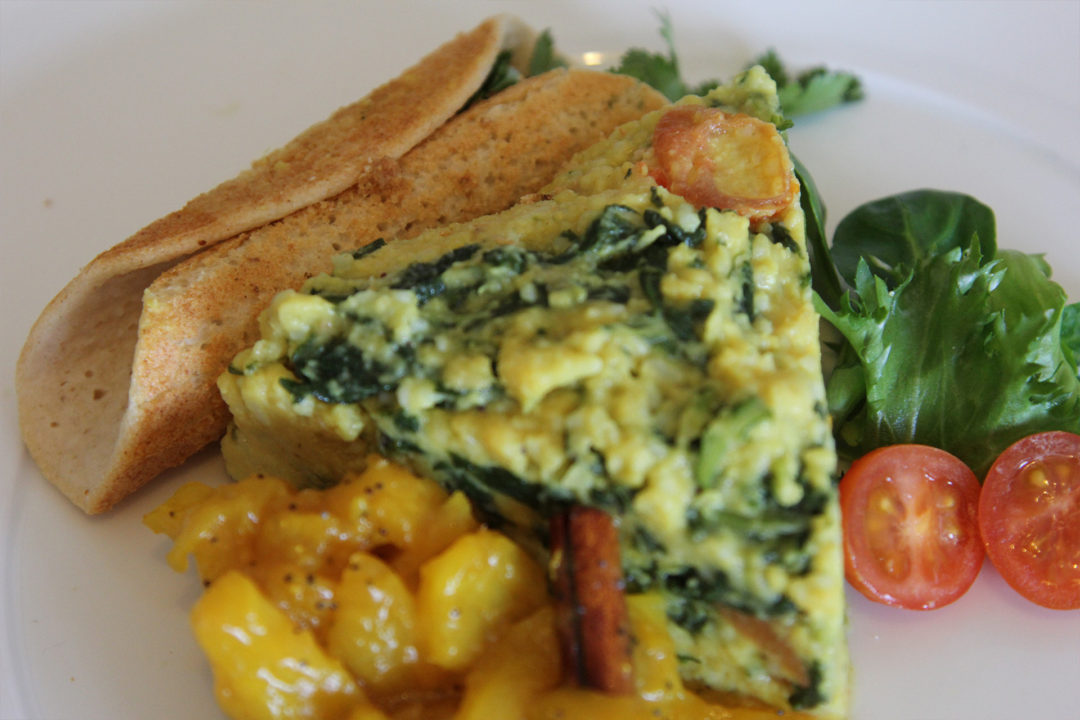
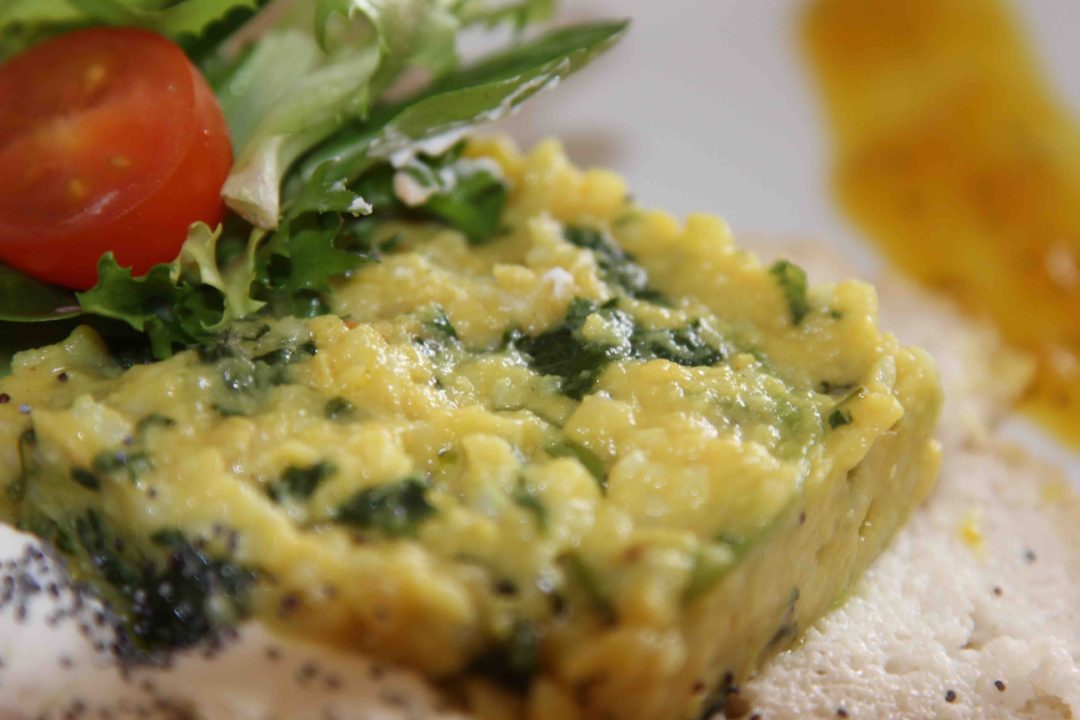
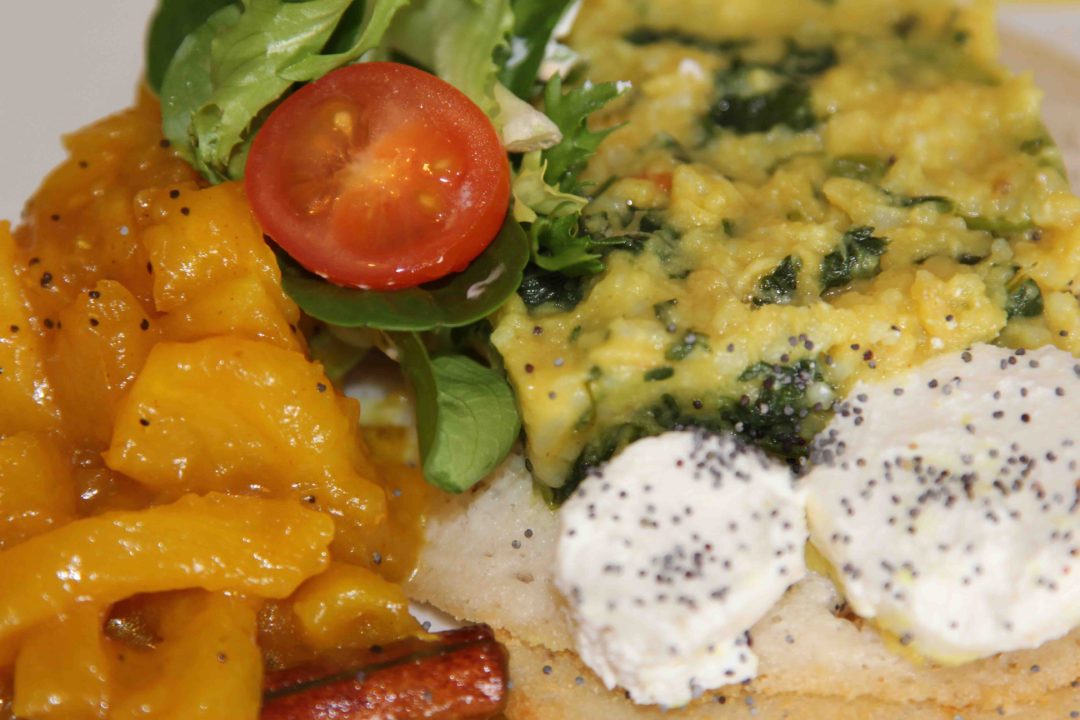
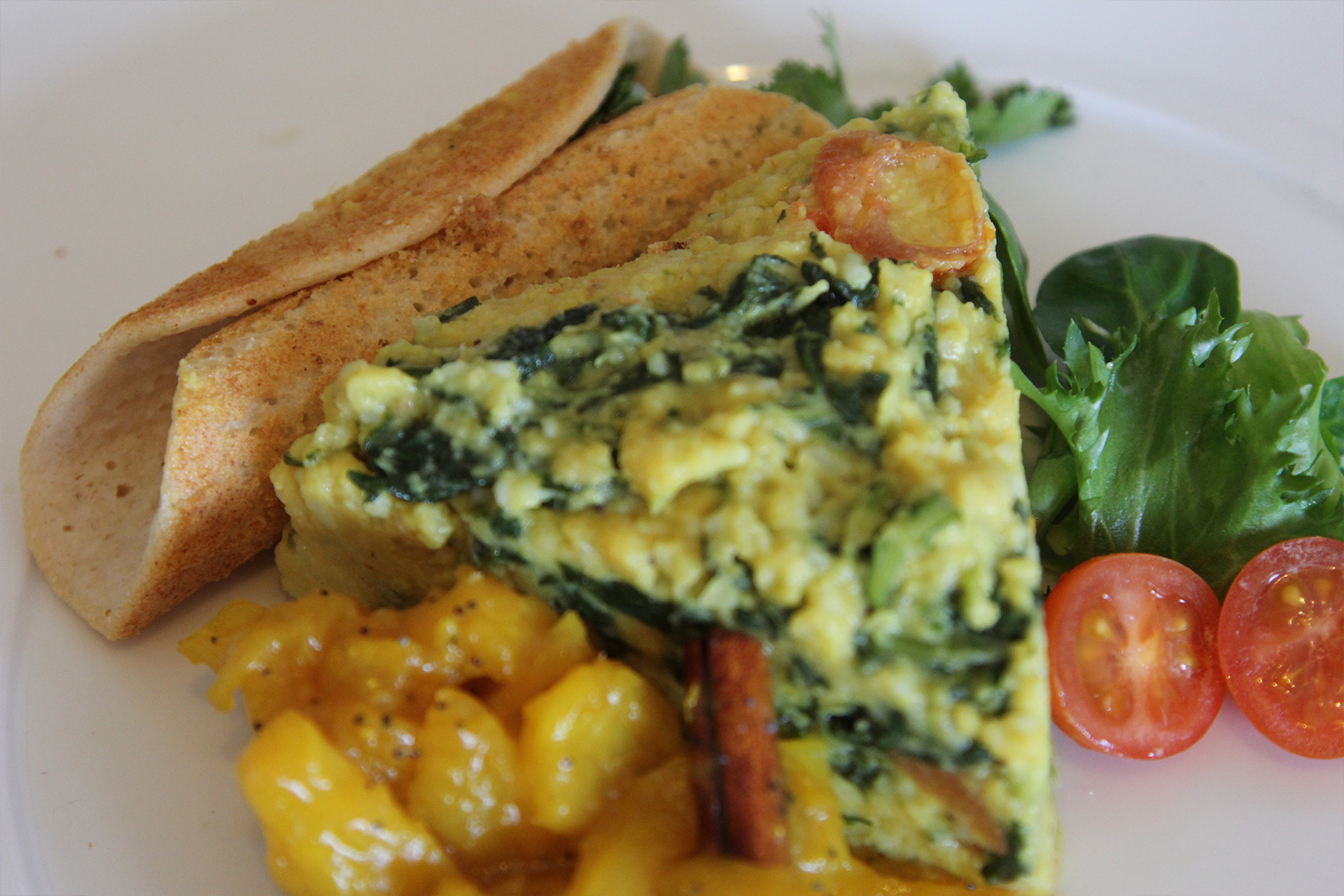

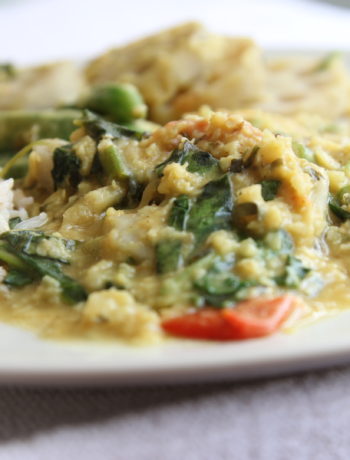
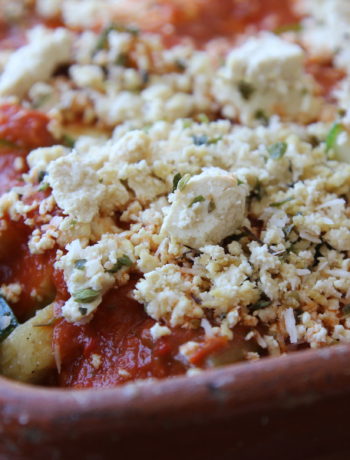
No Comments